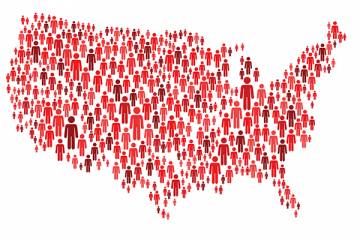Pandemic-related school closures have posed challenges for school districts and families across the United States. According to Annette Anderson, an assistant professor at the Johns Hopkins School of Education, those challenges are especially pronounced in schools that serve lower-income communities. Anderson previously worked as a classroom teacher and principal, and currently serves as the academic program director for JHU Center for Safe and Healthy Schools, and her research focuses on strategies for ensuring educational equity.
She recently spoke with the Hub to discuss the equity issues that the pandemic poses for public school children.
What have been the biggest disparities among school districts in the transition to remote learning as a result of the pandemic?
The first words that come to mind are access and availability of educational materials. First of all, this happened in such an unprecedented fashion that schools really did not have time to prepare for what was coming. For safety reasons, as you know, schools quickly transitioned to online or at-home learning. Some schools have been trying to manage paper packets, while other wealthier schools and districts immediately transitioned to online platforms that their students had already been using on a daily basis.
In the middle of a pandemic, it's a challenge to try to bring all schools up to the same level of technology access and availability. If schools or districts did not have a lot of online training available for teachers prior to the pandemic, they're also having to ramp up professional development to help teachers become familiar with using online platforms. At the same time, they're working to get students and their families up to speed.
With schools closed because of the #coronavirus pandemic, K-12 education is undergoing significant changes.
— Johns Hopkins Bloomberg School of Public Health (@JohnsHopkinsSPH) April 23, 2020
Annette Anderson (@ImpactGreater) from @JHUEducation joined @PublicHealthPod to discuss these changes with @SDesmon. https://t.co/6poTO886eWhttps://t.co/iZGlceJMZ8
Are there particular challenges faced by some public schools more than others during the pandemic?
Public school districts, rightly so, focused a lot of their early resources on food security. I don't think our public schools get enough credit for doing this. Food insecurity affects less-resourced districts more than it does wealthier districts. If you understand that for some of your students, school serves as their only reliable source for nutritious meals, as a school, you have to focus your immediate energy on making plans to reach out to and deliver food to remote destinations and hard-to-reach families. And a lot of lower-resourced schools did a fantastic job with that. Across the country, right away when the pandemic started, you saw school districts take on the herculean task of making sure students were fed, and even beyond that, that entire families were fed. That's a challenge that a lot of wealthier schools didn't face to the same extent, so they could focus resources on ensuring continuity of learning.
In other words, lower-resourced schools have had to stretch the most and be many things to different people within their communities. And the challenge is, how do we continue to meet the learning needs of all students, including students with an IEP (individualized education program) or differentiated learning plan, students who are gifted, students who need extra resources, and students with mental health challenges? All of those issues have to now be tackled in addition to addressing food insecurity, housing security, and health care access. These are big tasks that public schools handle every day, and the pandemic is making the needs greater and the work harder.
I really want to applaud the work that schools are doing—no one has said, "This is too much." They've said, "Let's roll up our sleeves and get to work." This is a completely new landscape and I am just so impressed by the teamwork I'm seeing in and across schools.
What policy responses could mitigate the disproportionate impact of COVID-19 on underresourced schools and students?
At a baseline, we as a nation need to invest in ensuring access to the internet for all students. There are programs like the E-rate program and private companies that have been helping to provide technology for schools and families. There are some districts that have a one-to-one laptop policy and others that clearly do not. What do we, as a country, think the baseline should be for all of our children? And that includes students with disabilities, students in rural areas, students in urban districts, and students on Native American reservations who may not have consistent access to strong internet connections.
We have to decide that we believe in equitable access for every child and then allocate the resources to support that. The current situation is a call to action for us as a nation to close the digital divide for our children. The future of our country depends on it.
Posted in Voices+Opinion, Politics+Society
Tagged education, education gap, center for safe and healthy schools, coronavirus, covid-19










